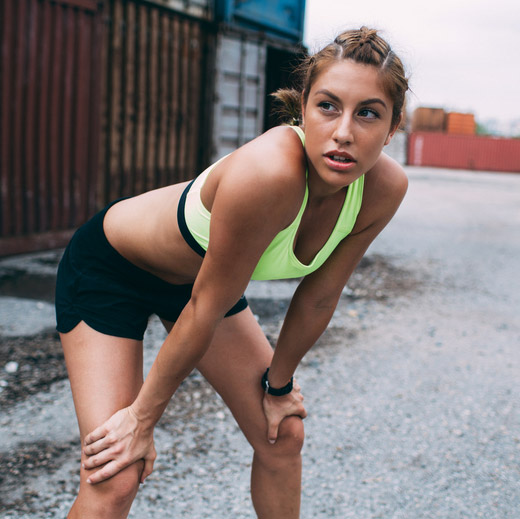It’s time to end the confusion when it comes to how exercise affects your skin. Here’s what you need to know to keep your skin happy and clear while gaining the benefits of a good sweat session.
There’s no denying how great a good workout can make you feel. Your heart’s pumping, your breaths are deep, your muscles are warmed and flexible, and you look naturally flushed and glowy. We know that exercise is good for your body and can create that instant brilliance, but how much does it benefit your skin over the long term? And are there any potential drawbacks? We hit up a dermatologist and fitness guru for the answers. Here’s a list of three myths about exercising you should stop believing and why.
Myth #1: Not everyone’s skin benefits from exercise.
“The benefits of exercise are universal, even though we might experience them at a different pace or order to the next person,” says Diana Booty, a certified fitness instructor and personal trainer at The Harley Medical Group. “Overall, exercise is great for your skin health. The boost in circulation drives oxygenated blood around the body and to the skin, nourishing and regenerating skin cells.”
This circulation boost creates immediate results, most notably via rosy cheeks, dewy skin, and a “lit from within” glow. While this is most notable during your workout and in the two to three hours that follow, you can see the subtle effects throughout the day. There are numerous benefits over the long term, too.
“Research shows that when you exercise, it makes your skin look younger,” says Debra Jaliman, a board-certified dermatologist and the author of, “Skin Rules: Trade Secrets from a Top New York Dermatologist. “The reason is that it stimulates substances called myokines—specifically IL-15. This increases the thickness of the deeper layers of the skin and decreases the thickness of the outer layers of the skin.”
Booty adds, “As we age, our skin naturally loses the youthful layer of fat just beneath the skin that keeps it plump, leaving saggy skin in its place, but with a carefully structured exercise program, you can build up lean muscle to create a similar volumizing effect.”
Ideally, you should work out between three to six times a week for 45 minutes. Make sure you load up on lots of water before, during, and after your workout, and religiously apply sunscreen if you’re exercising outdoors. Try the Missha Near Skin Dustless Defense Sun Block SPF 50+/PA+++, which blocks air pollution and the sun’s damaging rays at the same time.
Myth #2: Exercising allows you to sweat out toxins that are harmful to your skin.
This is somewhat true. “Sweat is 99% water,” says Jaliman. “There is some evidence that you can sweat out toxic materials. Some chemicals such as bisphenol A (BPA) and some heavy metals have been detected in sweat.” Basically, you can sweat out some of that gnarly stuff, but it’s mostly just water being excreted.”
Also, the biggest negative skin issues come with the whole sweating issue.
“When we exercise we sweat a lot. This excessive sweating can make our skin break out, especially if the person is acne prone,” says Jaliman. “Also, wearing makeup while exercising can make the skin break out. You should always shower after exercising so that you don’t get folliculitis on your body.”
As a rule, you should wash your face before and after hitting the gym, and make sure to clean your entire body afterward, as well. We recommend throwing an easy-to-tote cleansing stick into your gym bag. Try the Neogen Real Fresh Green Tea Cleansing Stick.
“Bacteria and moisture build up close to the skin when you sweat, so get showered and into clean clothes as soon as possible, allowing your skin to dry and breath,” says Booty. “When moisture is trapped close to the skin, spots or heat rashes can develop, so as lovely as your athleisure wear might be, try to avoid sitting around in it for too long after your workout.”
Myth #3: Some workouts are inherently better for your skin.
“Any exercises will improve your skin,” says Debra Jaliman, a board-certified dermatologist and the author of, “Skin Rules: Trade Secrets from a Top New York Dermatologist. “Exercising increases blood flow which helps nourish skin cells. Just pick one that you enjoy.”
